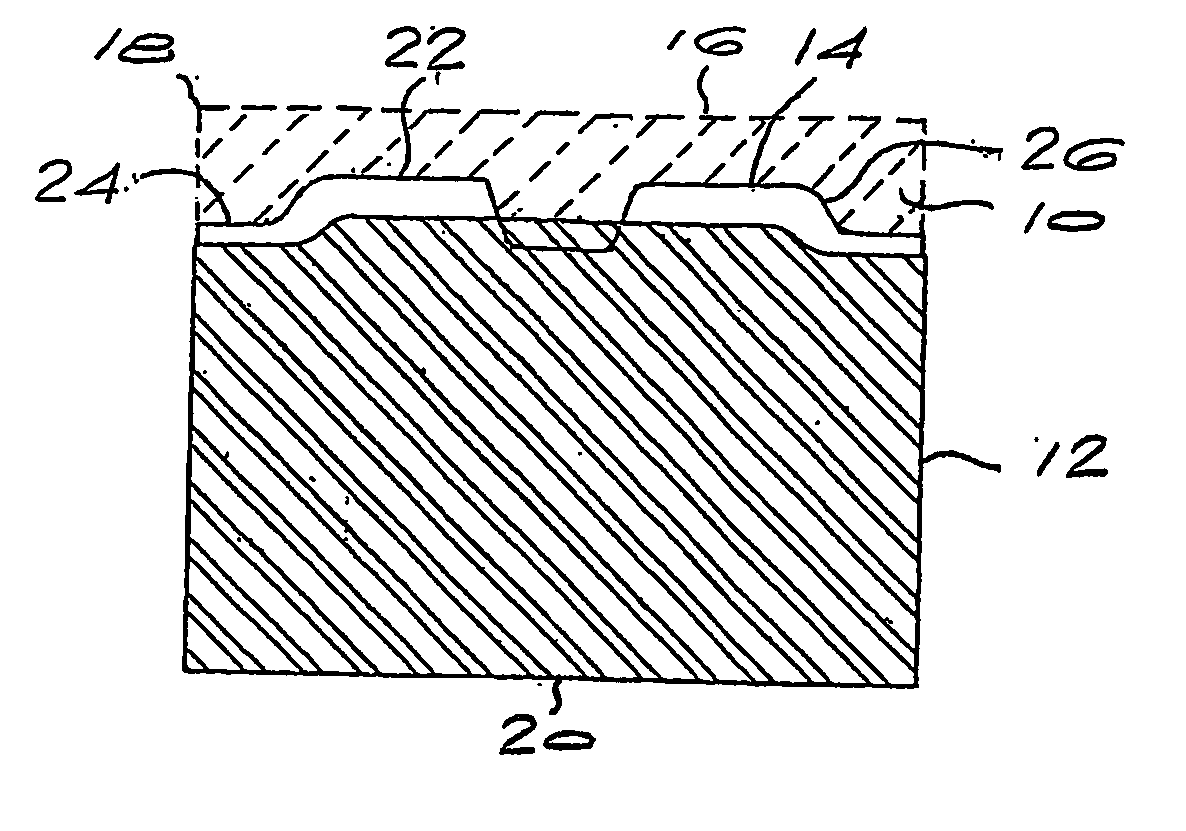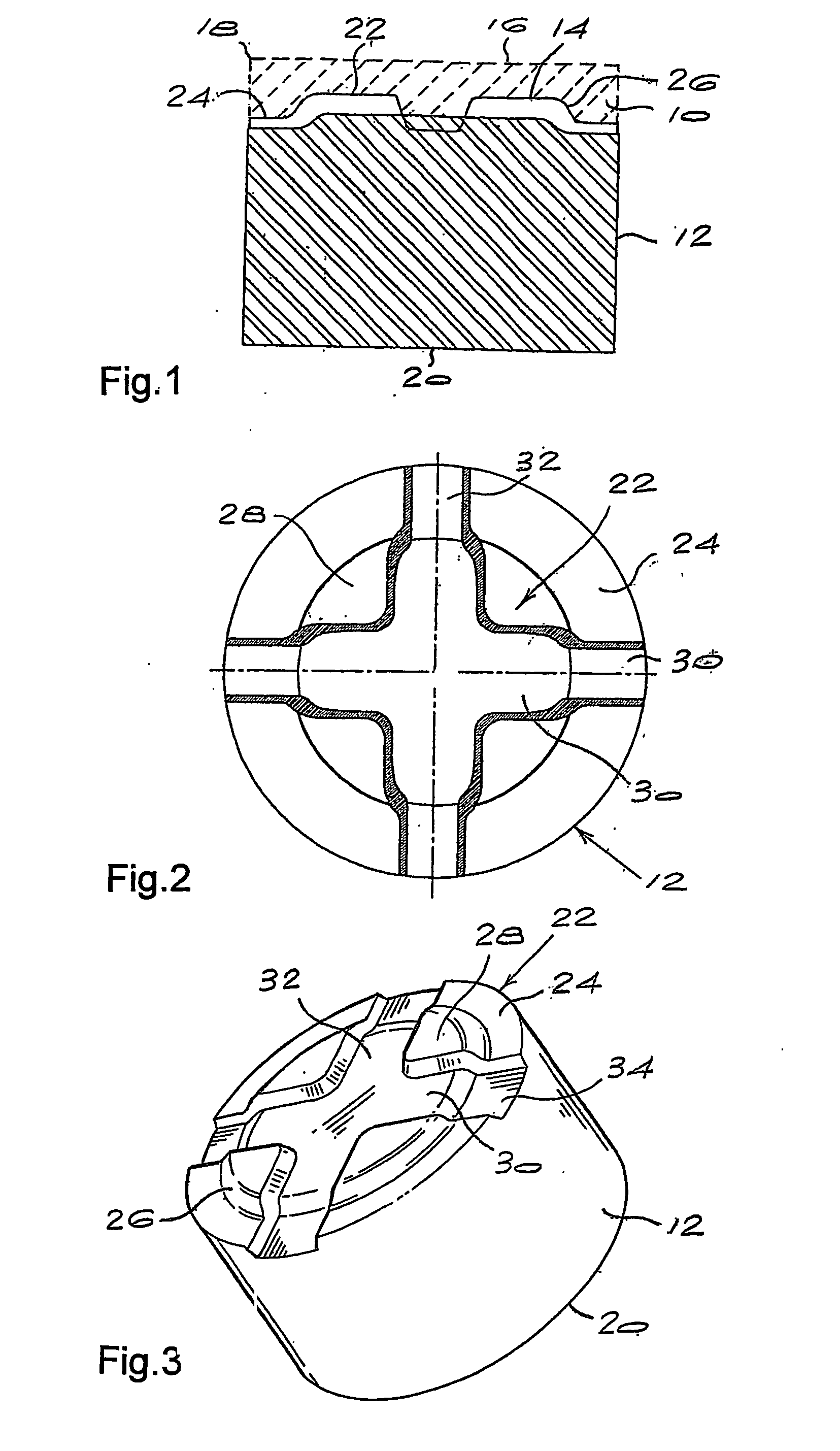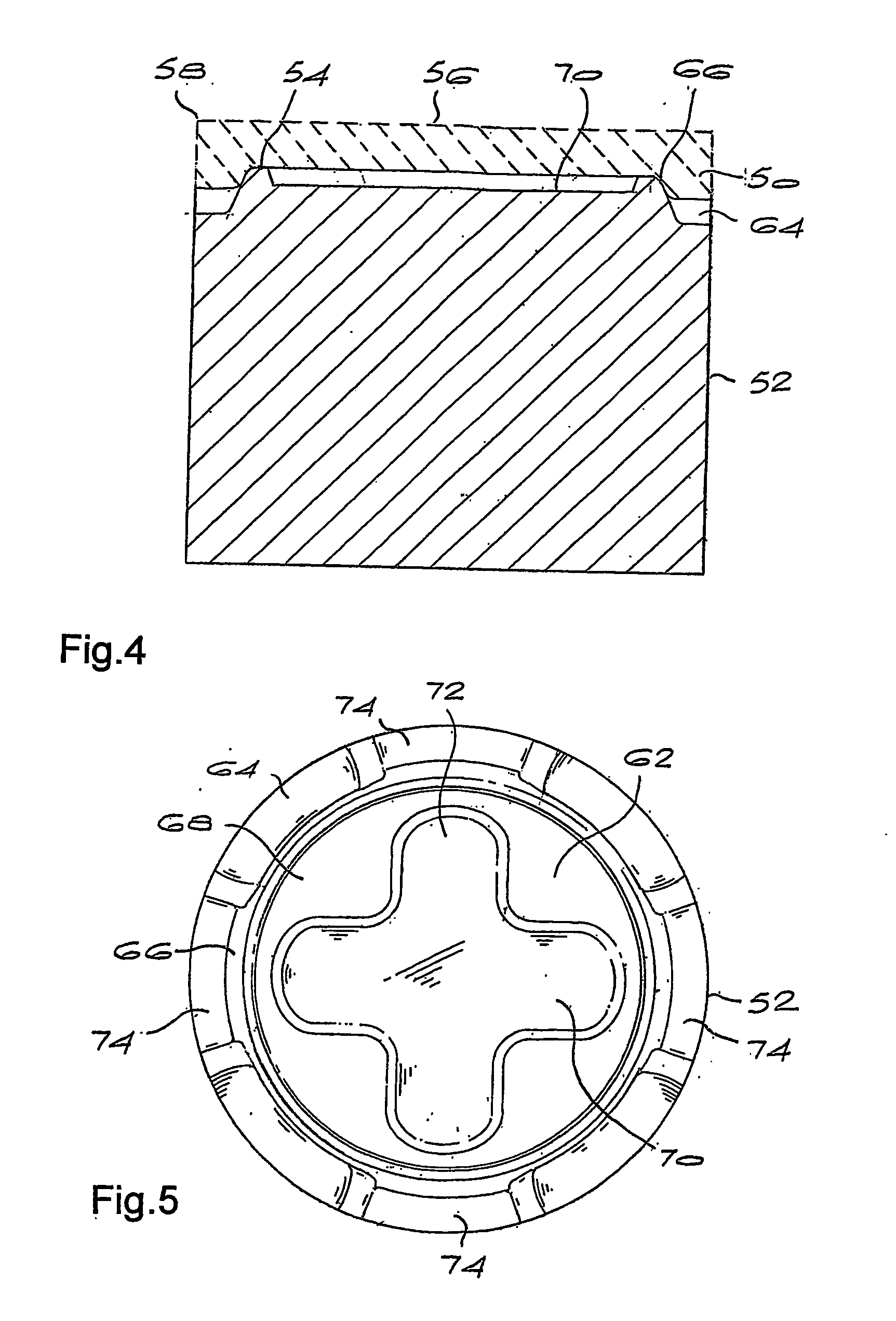Polycrystalline diamond abrasive elements
a technology of abrasives and diamonds, applied in the field of polycrystalline diamond abrasives, can solve the problems of increasing the damage to the table, prone to fracture, and becoming more brittle or prone to fracture, and pcd elements designed for improving wear performance will therefore tend to compromise or reduce the resistance to spalling
- Summary
- Abstract
- Description
- Claims
- Application Information
AI Technical Summary
Benefits of technology
Problems solved by technology
Method used
Image
Examples
first embodiment
[0041]FIGS. 2 and 3 illustrate more clearly the cemented carbide substrate used in the invention shown in FIG. 1. The substrate 12 has a flat bottom surface 20 and a profiled upper surface 22, which generally has a cruciform configuration. The profiled upper surface 22 has the following features: [0042] i. A stepped peripheral region defining a ring 24. The ring 24 has a sloping surface 26 which connects an upper flat surface or region 28 of the profiled surface 22. [0043] ii. Two intersecting grooves 30, 32, which define a cruciform recess, that extend from one side of the substrate to the opposite side of the substrate. These grooves are cut through the upper surface 28 and also through the base surface 34 of the ring 24.
second embodiment
[0044] Referring now to FIG. 4, a polycrystalline diamond abrasive element of the invention comprises a layer 50 of polycrystalline diamond (shown in phantom lines) bonded to a cemented carbide substrate 52 along an interface 54. The polycrystalline diamond layer 50 has an upper working surface 56, which has a cutting edge 58. The edge is illustrated as being a sharp edge. This edge can also be bevelled. The cutting edge 58 extends around the entire periphery of the surface 56.
[0045]FIGS. 5 and 6 illustrate more clearly the cemented carbide substrate used in the second embodiment of the invention, as shown in FIG. 4. The substrate 52 has a flat bottom surface 60 and a profiled upper surface 62. The profiled upper surface 62 has the following features: [0046] i. A stepped peripheral region defining a ring 64. The ring 64 has a sloping surface 66 which connects an upper flat surface or region 68 of the profiled surface. [0047] ii. Two intersecting grooves 70, 72 forming a cruciform fo...
PUM
| Property | Measurement | Unit |
|---|---|---|
| depth | aaaaa | aaaaa |
| particle size | aaaaa | aaaaa |
| particle size | aaaaa | aaaaa |
Abstract
Description
Claims
Application Information
 Login to View More
Login to View More - R&D
- Intellectual Property
- Life Sciences
- Materials
- Tech Scout
- Unparalleled Data Quality
- Higher Quality Content
- 60% Fewer Hallucinations
Browse by: Latest US Patents, China's latest patents, Technical Efficacy Thesaurus, Application Domain, Technology Topic, Popular Technical Reports.
© 2025 PatSnap. All rights reserved.Legal|Privacy policy|Modern Slavery Act Transparency Statement|Sitemap|About US| Contact US: help@patsnap.com



